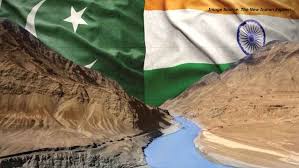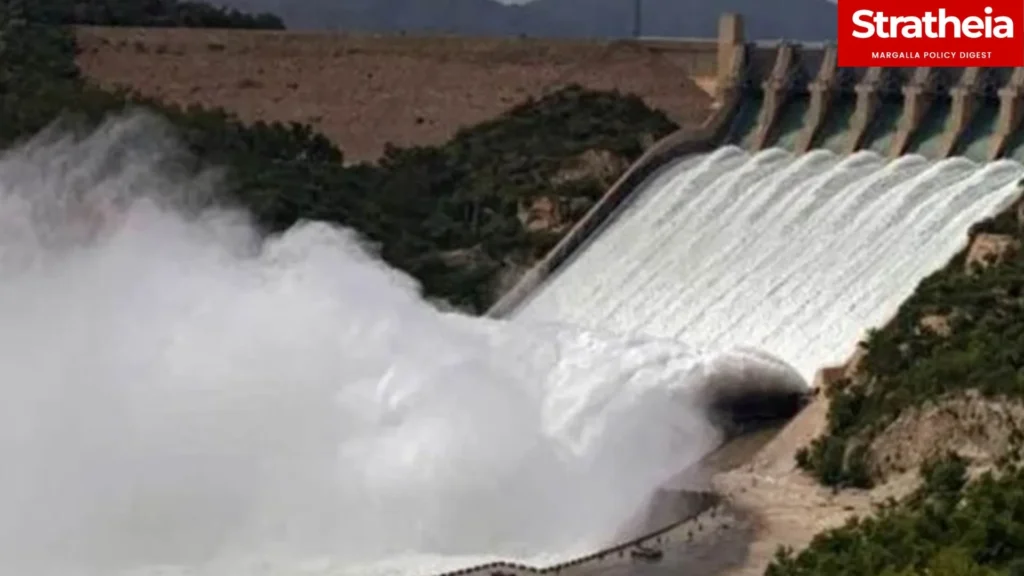India stop river water to Pakistan—this controversial topic often comes up when political tensions escalate. But how much control does India really have?

The question of India stop river water to Pakistan stems from the long-standing Indus Waters Treaty signed in 1960. While India has partial control over the eastern rivers, the treaty grants significant rights to Pakistan over the western rivers. Calls to revisit or revoke the treaty arise during conflicts, but such actions come with legal, diplomatic, and environmental consequences. This article uncovers 7 shocking facts about India’s authority and limitations in managing the flow of river water to Pakistan.
After Tuesday’s horrifying incident in Indian-administered Kashmir, India halted a significant treaty governing the two nations’ sharing of water from six rivers in the Indus basin, leaving many wondering.
The 1960 Indus Waters Treaty (IWT), which was seen as a model for transboundary water management, withstood two nuclear rival wars.
India has accused Pakistan of supporting cross-border terrorism, a claim Islamabad categorically denies, and the suspension is one of several actions it has taken against the country. Stopping the flow of water “will be considered as an Act of War” and it has retaliated against Delhi with reciprocal actions.
Under the Indus Waters Treaty, the three eastern rivers – the Ravi, Beas, and Sutlej – were allocated to India, while 80% of the three western rivers – the Indus, Jhelum, and Chenab – were given to Pakistan, sparking ongoing debates on whether India stop river water to Pakistan is even legally or practically possible.

Conflicts have already erupted, with Pakistan claiming that some hydroelectric and water infrastructure projects in India will diminish river flows and be in violation of the pact. (A third of Pakistan’s hydropower and more than 80% of its agriculture rely on water from the Indus basin.)
India, meanwhile, has been pushing to review and modify the treaty, citing changing needs—from irrigation and drinking water to hydropower—especially as climate change intensifies. These efforts are closely tied to the broader question of whether India stop river water to Pakistan in a shifting geopolitical and environmental context.
Under the World Bank-mediated accord, India and Pakistan have pursued conflicting legal paths throughout time.
The upstream nation, India, has a geographic advantage because this is the first time either side has declared a suspension.
But what does the suspension really mean? Could India stop river water to Pakistan by holding back or diverting the Indus basin’s waters, potentially depriving Pakistan of its lifeline? And is India even capable of executing such a move within the bounds of international law and existing infrastructure?
According to experts, during times of heavy flow, India will almost certainly be unable to contain tens of billions of cubic meters of water from the western rivers. Both the large canals and the enormous storage systems required to redirect such volumes are absent.
“The infrastructure India has are mostly run-of-the-river hydropower plants that do not need massive storage,” said Himanshu Thakkar, a regional water resources expert with the South Asia Network on Dams, Rivers and People, adding that this limits how far India stop river water to Pakistan in practical terms.

Without retaining a lot of water, these hydropower plants employ the force of flowing water to turn turbines and produce energy.
Inadequate infrastructure, according to Indian experts, has prevented India from making the most of even its 20% share of the Jhelum, Chenab, and Indus waters under the treaty. This is one of the main reasons they support the construction of storage structures, which Pakistan objects to, citing treaty rules.
According to experts, India can now divert or hold back more water without telling Pakistan by altering its current infrastructure or constructing new ones.
“Unlike in the past, India will now not be required to share its project documents with Pakistan,” said Mr Thakkar—an important shift that fuels the ongoing debate over whether India stop river water to Pakistan through greater control over its infrastructure plans.
However, the development of water infrastructure in the Indus basin has not proceeded quickly enough due to obstacles like challenging topography and internal Indian disputes over some of its projects.
Officials from the Indian water resources ministry informed the BBC that they would expedite the building of a number of dams and water storage projects in the Indus basin following a militant attack in Indian-administered Kashmir in 2016.
Although there is no official information on the status of such projects, sources say progress has been limited. However, some experts argue that if India stop river water to Pakistan by controlling the flow using its existing and upcoming infrastructure, Pakistan could feel the impact significantly during the dry season, when water availability is already at its lowest.
“A more pressing concern is what happens in the dry season—when the flows across the basin are lower, storage matters more, and timing becomes more critical,” wrote Hassan F Khan, assistant professor of Urban Environmental Policy and Environmental Studies at Tufts University in the Dawn newspaper, highlighting the period when any attempt by India stop river water to Pakistan could have the most serious consequences.
“That is where the absence of treaty constraints could start to be felt more acutely.”
In order to forecast floods and plan for irrigation, hydropower, and drinking water, India is required by the treaty to provide Pakistan with hydrological data.
Pradeep Kumar Saxena, India’s former Indus Waters Treaty (IWT) commissioner for over six years, told the Press Trust of India that the country can now stop sharing flood data with Pakistan. While the region experiences damaging floods during the monsoon season—from June to September—Pakistani authorities have already claimed that India was sharing very limited hydrological data. This development adds another layer to the larger question of whether India stop river water to Pakistan not just through flow control, but also by restricting critical information.
Can India Stop River Water to Pakistan? Experts Debate Water as a Strategic Weapon
“India was sharing only around 40% of the data even before it made the latest announcement,” Shiraz Memon, Pakistan’s former additional commissioner of the Indus Waters Treaty, told BBC Urdu. Another pressing issue that arises whenever there is water-related tension in the region is whether the upstream country can “weaponise” water against the downstream country—raising the question of whether India stop river water to Pakistan could become a strategic move in times of conflict.
This is frequently referred to as a “water bomb” since the upstream nation may briefly contain water before abruptly and unexpectedly releasing it, causing significant harm downstream.
Is it possible for India to accomplish that?
Experts say India would first risk flooding its own territory, as its dams are located far from the Pakistan border. However, India could now flush silt from its reservoirs without prior warning, a move that could potentially cause significant damage downstream in Pakistan—fueling concerns that India stop river water to Pakistan might be achieved through indirect methods, like manipulating reservoir management.
Himalayan rivers like the Indus carry high silt levels, which quickly accumulate in dams and barrages. Sudden flushing of this silt could cause significant downstream damage, raising concerns that India stop river water to Pakistan might not only disrupt the flow but also lead to environmental consequences in the region.
The larger picture is that the Indus River rises in Tibet, while India is located downstream of China in the Brahmaputra basin.
In 2016, after India warned that “blood and water cannot flow together” following a militant attack in Indian-administered Kashmir, China blocked a tributary of the Yarlung Tsangpo—which becomes the Brahmaputra in northeast India—as part of a hydropower project. This move sparked fears that India stop river water to Pakistan could be a similarly provocative tactic in times of heightened tension between the two countries.
After building several hydropower plants in Tibet, China has green-lit what will be the world’s largest dam on the lower reaches of the Yarlung Tsangpo. Beijing claims minimal environmental impact, but India fears it could give China significant control over the river’s flow, raising concerns that India stop river water to Pakistan could set a precedent for water control as a strategic tool.
















